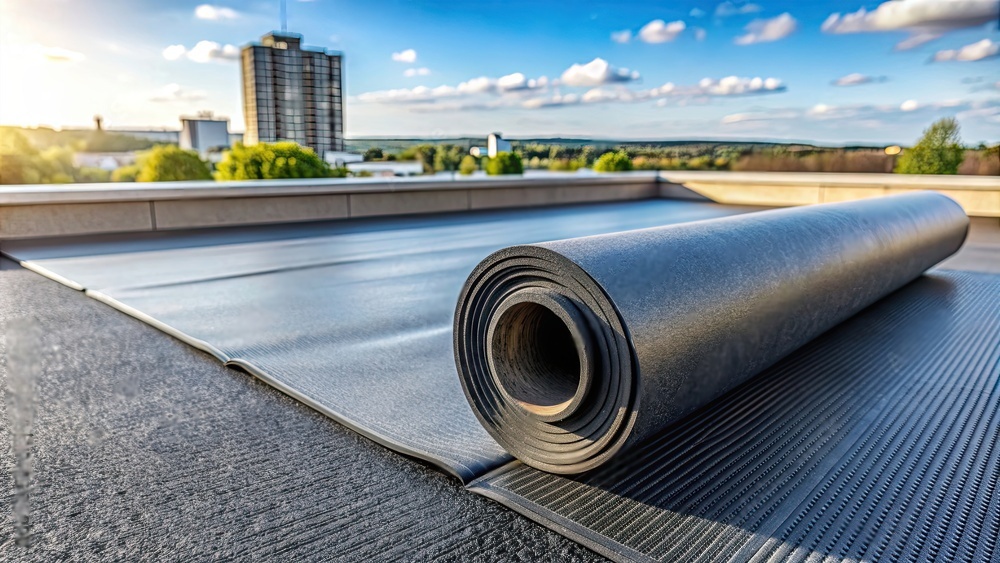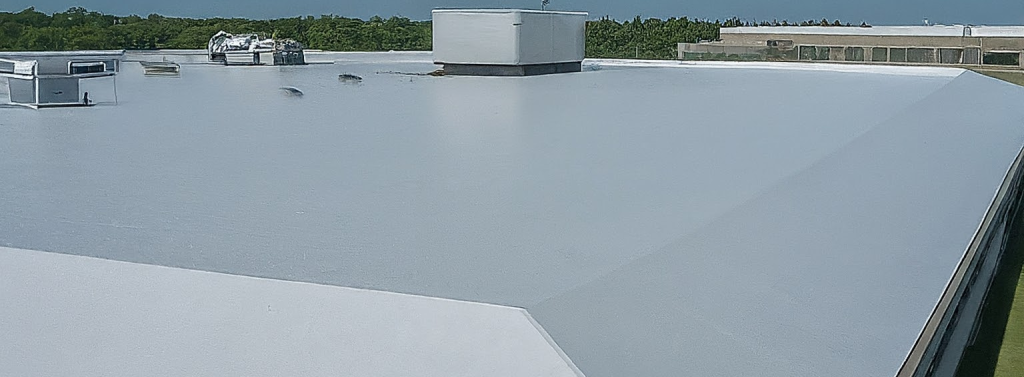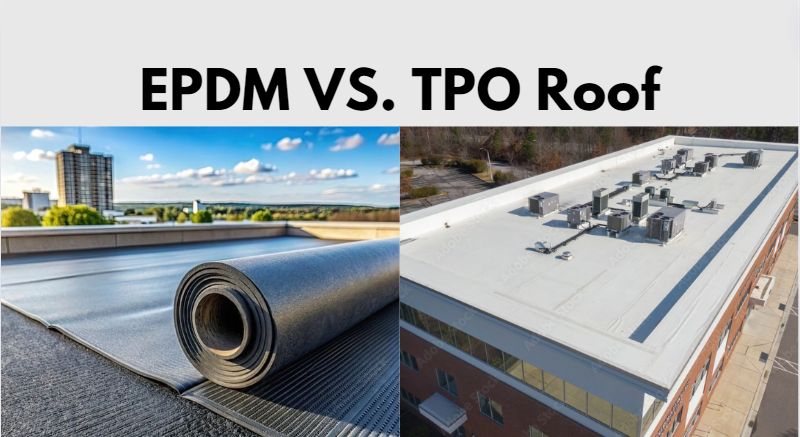When considering roofing for your commercial building, selecting the appropriate material can mean all the difference for both performance and on-budget performance. Two popular options include EPDM. While both have some considerable advantages, one of these could be ideal for your needs. Let’s head into a comparison on EPDM vs. TPO roof that will help you choose the right one for your needs.
What is EPDM?
EPDM is a synthetic rubber roofing membrane that has been on the market for decades. Made from ethylene, propylene, and diene monomers, it has become synonymous with durability and flexibility. Typically, large sheets are available with the product, and therefore, laying is relatively easy.

Why Choose EPDM?
For so many commercial properties, EPDM has been preferred due to its reliability and its long life span. It is particularly well-suited in areas with extreme weather conditions and temperatures that fluctuate between very cold and very hot.
What is TPO?
TPO is a single-ply roofing membrane containing a blend of polypropylene and ethylene-propylene rubber. The membrane is known for its reflective surface, which allows the reduction of cooling costs by reflecting sunlight away from buildings.

Why Choose TPO?
TPO is more energy-efficient and eco-friendlier of the two. It’s a relatively new material compared to EPDM, but it has quickly become popular due to high performance in hot climates and with an aim of bringing down energy bills.
Key Differences Between EPDM vs. TPO
1. Durability
EPDM Durability
EPDM is highly reputed for its durability as it lasts for more than 20 years, being resistant to UV radiation, ozone, and severe temperatures. It is also flexible, so that it is capable of withstanding the expansion and contraction forces of building materials.
TPO Durability
TPO is also long-lasting but has a slightly shorter life than EPDM. It is known to last about 15 to 20 years but can last much longer; the true performance of TPO may vary from one installation to another, however, based on installation quality and environmental exposure.
2. Energy Efficiency
EPDM Energy Efficiency
For this reason, most EPDM roofs are black-colored and absorb heat rather than reflect it. In this respect, cooling costs would be higher, especially for those who own buildings situated in warmer climes. However, EPDM roofs can be installed with coverings that disseminate the heat and improve their energy efficiency.
TPO Energy Efficiency
TPO is energy efficient in the sense that the surface of this material is highly reflective. The membrane, whether white or light-colored, reflects the sun’s rays, making your building not too heated; in fact, this factor will help in possibly saving you much more on air conditioning.
3. Installation and Maintenance
EPDM Installation and Maintenance
Most of the time, EPDM is not very complicated to install. The product comes in huge sheets; therefore, the numbers of seams and potential leak points are kept to a minimum. The flashing installation may need some additional protection while it needs thorough inspection for the frequent occurrence of damages or wears. However, maintenance is relatively less burdensome than some other options available when it comes to roofing.
TPO Installation and Maintenance
The TPO is attached by seams with heat welding, making a powerful waterproof seal. Like EPDM, the TPO system demands maintenance practices that give attention to maintaining the coherence of the seams as well as occasional cleaning to prevent debris from gathering. TPO is somewhat easier to maintain.
4. Budget
EPDM Budget
EPDM generally has a lower upfront investment than TPO. Installed costs range between $4 to $8 per square foot. As such, for a commercial project, an Epdm TPO roofing cost would be anywhere in the vicinity of $6,000 to $12,000, based on size and scope.
TPO Budget
TPO does have a higher cost. The installation runs $5 to $10 per square foot, and a commercial project may cost $8,000 to $15,000 total. That may be worth it to some clients for the energy bill savings from the reflective qualities.
Which is Right for You?
Consider EPDM if :
- You Want Durability: EPDM’s long life span and all-weather durability factor make for a strong case when it comes to durability.
- Budget Is a Concern: With lower upfront costs involved, EPDM is often a more cost-effective choice when prescribed.
- You Prefer Your Solutions Proven: EPDM has been in the marketplace for over 40 years and is a very proven roofing membrane.
Consider TPO if:
- Energy Efficiency Is a Top Concern: TPO’s reflectivity helps to keep cooling costs down.
- You’re Interested in Eco-Friendly Options: TPO is often composed of recyclable materials and can be an excellent green option.
- Modern Solution: If new technology and materials are on your mind, TPO is a way more modern solution with advanced features.
Final Thoughts
Both EPDM vs. TPO have their own set of distinct properties and features that are well adapted for commercial roofing needs; therefore, the one chosen between the two would cater to needs and priorities. EPDM is known for being durable and cost-effective in respect to the majority of the buildings. TPO, on the other hand, gives more energy efficiency with modern features that will give you long-term savings. Look at the needs of your building, its climate, and budget to decide which roofing material best suits the job.
Have Questions? Call Us Now!
We’re here to help—quick answers, friendly service, anytime you need!

